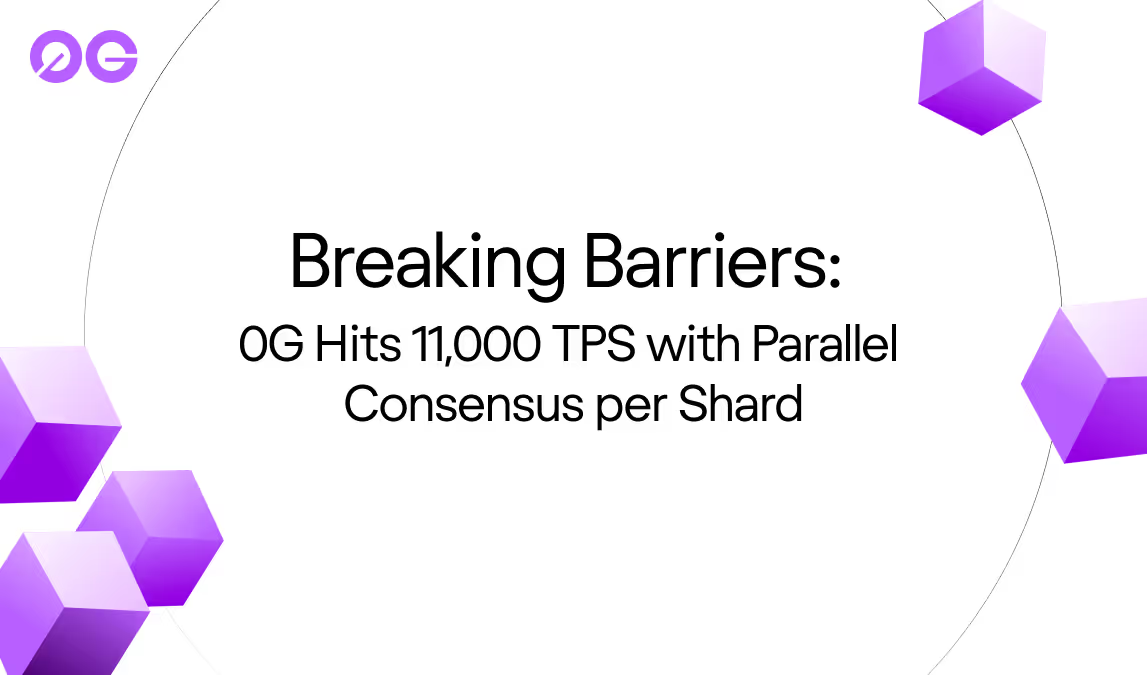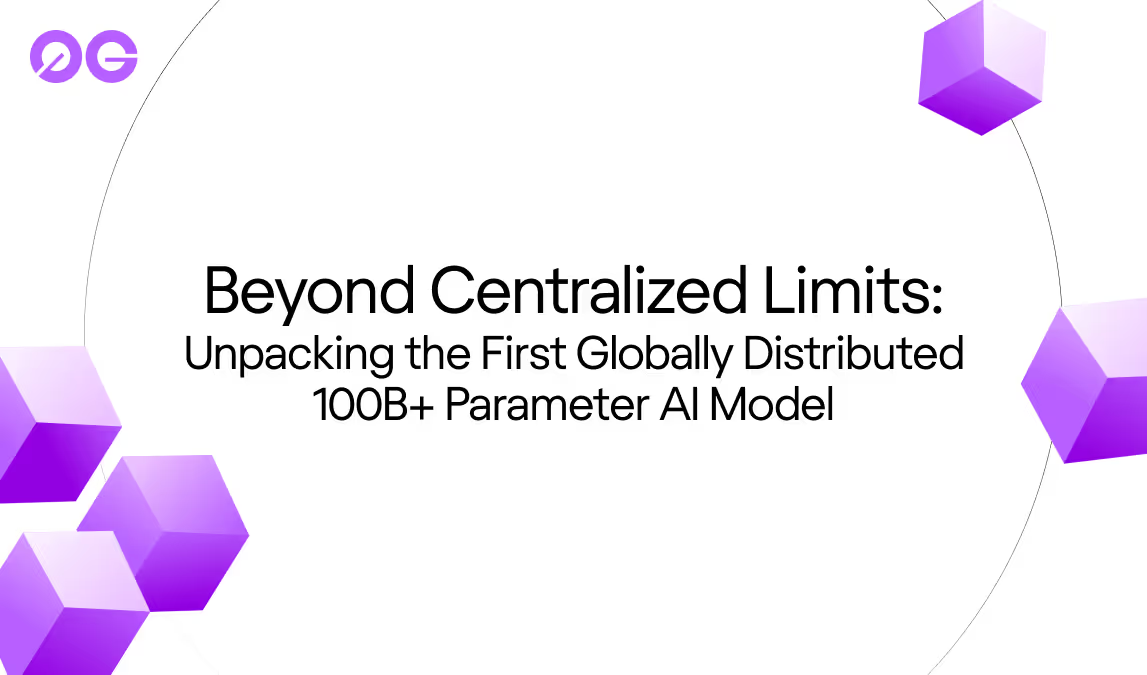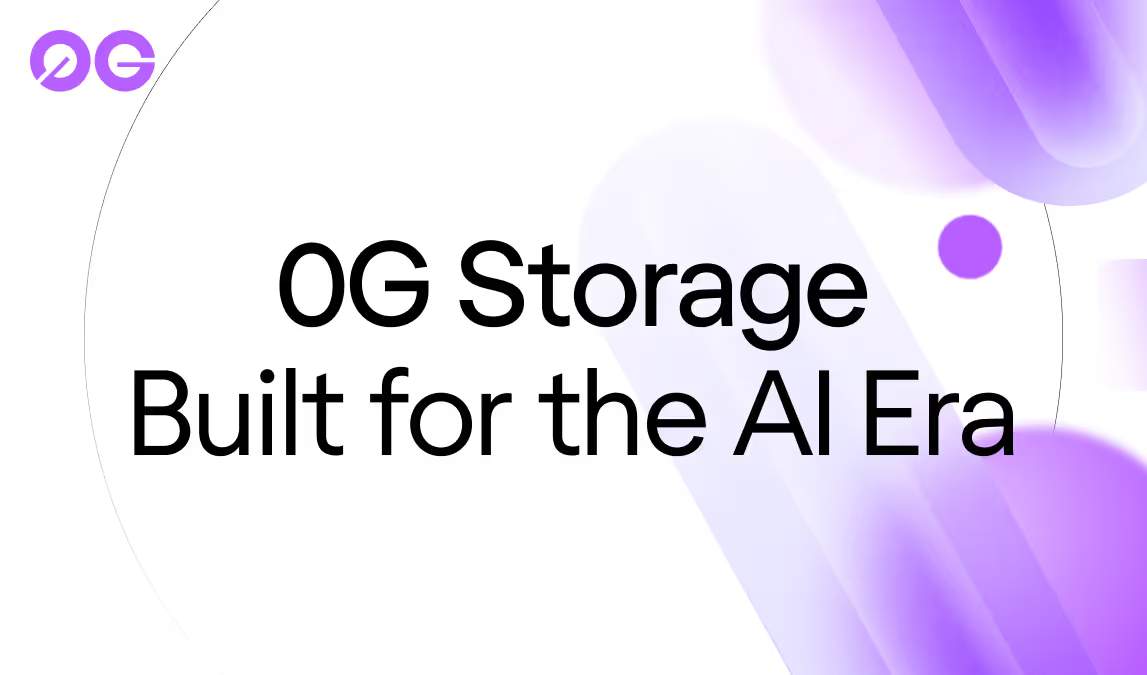

0G Storage: Built for the AI Era
AI is moving onchain, and that demands more than just compute.
Whether you’re training models, running inference, or coordinating agents, every intelligent system depends on one thing: fast, reliable access to data.
But most decentralized storage protocols weren’t built for that. Solutions like IPFS, Arweave, and Filecoin focus on archiving static files, not powering real-time, intelligent applications. They struggle with rapid updates, structured querying, and composability, all essential for AI.
0G Storage changes that. It’s a modular, AI-native storage layer designed specifically for the demands of modern onchain applications. Rather than simply providing a place to store files, 0G Storage acts as a memory layer for the next generation of software.
What Makes 0G Storage Unique
0G Storage is based around a layered architecture purpose built for flexibility and performance. The system is made up of two composable components:
The Log Layer handles large, unstructured blobs—like model weights, datasets, event logs, or raw sensor data. It works like an append-only ledger: everything written is timestamped, ordered, and permanently recorded. The data is split into chunks, erasure coded, and distributed across the network for redundancy and durability.
The Key-Value (KV) Layer sits on top of the log layer, adding structure and mutability. It enables you to store and query specific pieces of data (such as vector embeddings, user states, or metadata) with millisecond-level performance. Every update to the KV store is logged immutably, while still allowing developers to read and write structured state efficiently.
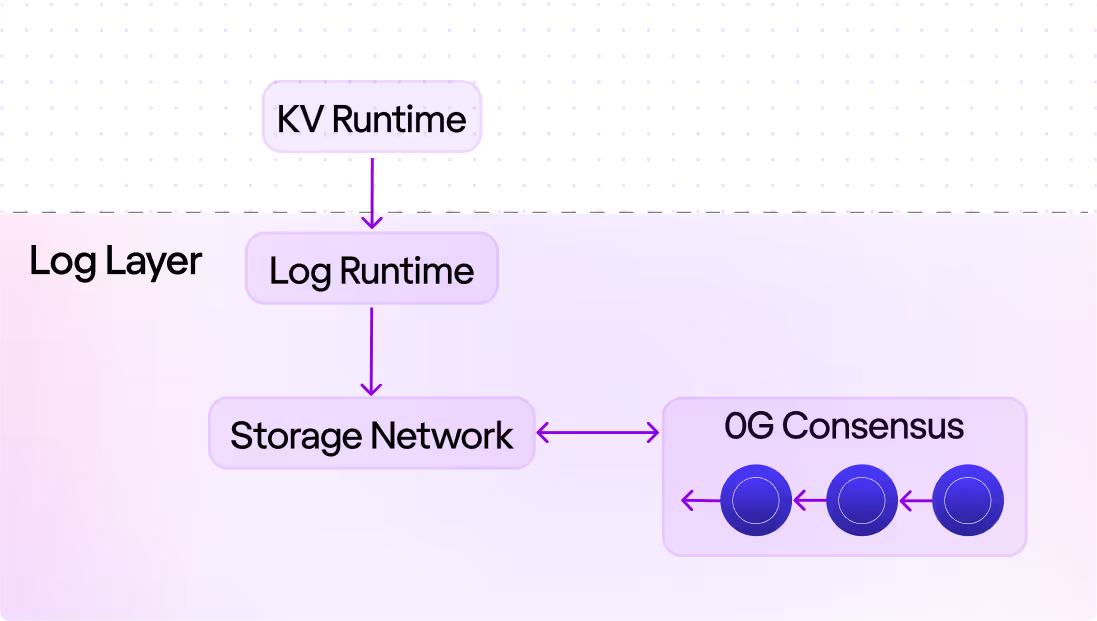
These layers can be used independently or together, and they’re fully modular. You can integrate 0G Storage into your existing app, use it with or without the 0G chain, or plug it into a custom rollup or VM. It’s designed to work across ecosystems, not just within its own sandbox.
This flexibility opens up a range of real-world use cases already in motion:
- AI agents retrieving memory and context on the fly
- DePIN networks streaming real-time sensor data
- LLM pipelines accessing decentralized training data
- Games and social apps persisting user and state data trustlessly
No matter what you’re building, 0G Storage makes it easier to access and coordinate data across users, chains, and intelligent agents. This modularity makes 0G Storage a universal building block, not just for 0G-native apps, but for any ecosystem that needs performant, persistent, onchain data.
How 0G Storage Works
Underneath the hood, 0G Storage introduces several innovations that make it fast, secure, and verifiable.
All stored data (be it a blob or a KV entry) is cryptographically committed, allowing every operation to be tracked, verified, and reproduced. This ensures applications can confidently interact with the data layer without relying on any centralized provider.
Data is encoded using erasure coding, allowing it to be split across many nodes and reconstructed even if some are offline. To keep nodes honest, the system uses Proof of Replication and Availability (PoRA): storage providers are randomly challenged to prove they still hold specific pieces of data, and failure to respond can lead to slashed rewards.
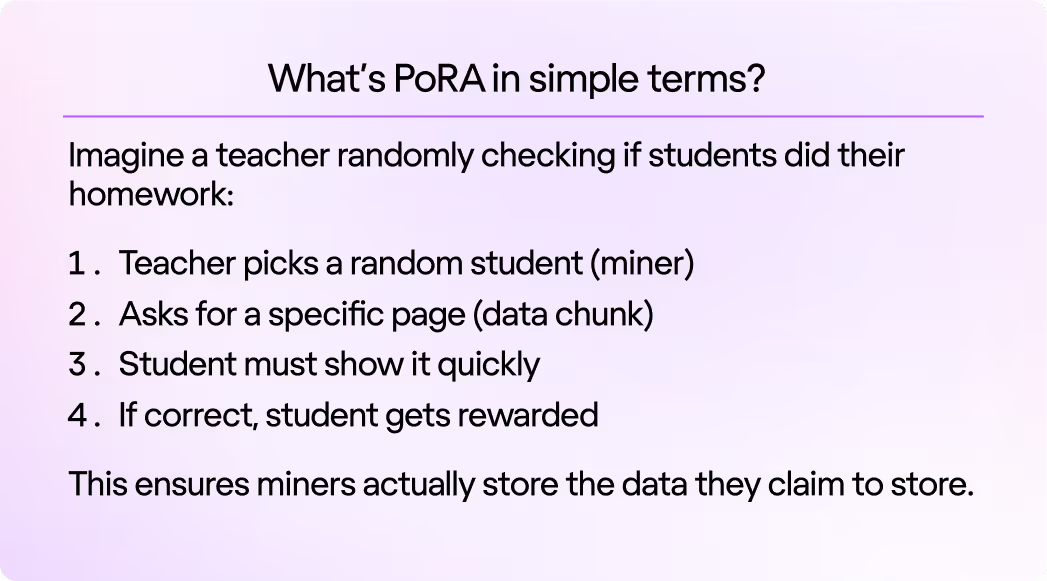
This design ensures that data is not just stored, but always available, provable, and composable into more complex onchain systems. Together, these mechanisms ensure 0G Storage is fast, secure, and provably reliable, exactly what intelligent systems need to operate autonomously.
Designed to Scale Sustainably
Storing and serving AI-scale data isn’t just a technical challenge; it’s an economic one. 0G introduces a three-part incentive structure that balances affordability with long-term availability:
- One-Time Storage Fee: Users pay based on the size of data stored.
- Storage Endowment: A portion of that fee is streamed over time to storage miners to ensure continuing availability.
- Data Sharing Royalties: Uniquely, 0G rewards nodes that share data with others by tying royalties to the network’s PoRA mechanism. I.e., when a node helps another retrieve and validate data through a PoRA challenge, both can earn additional rewards.
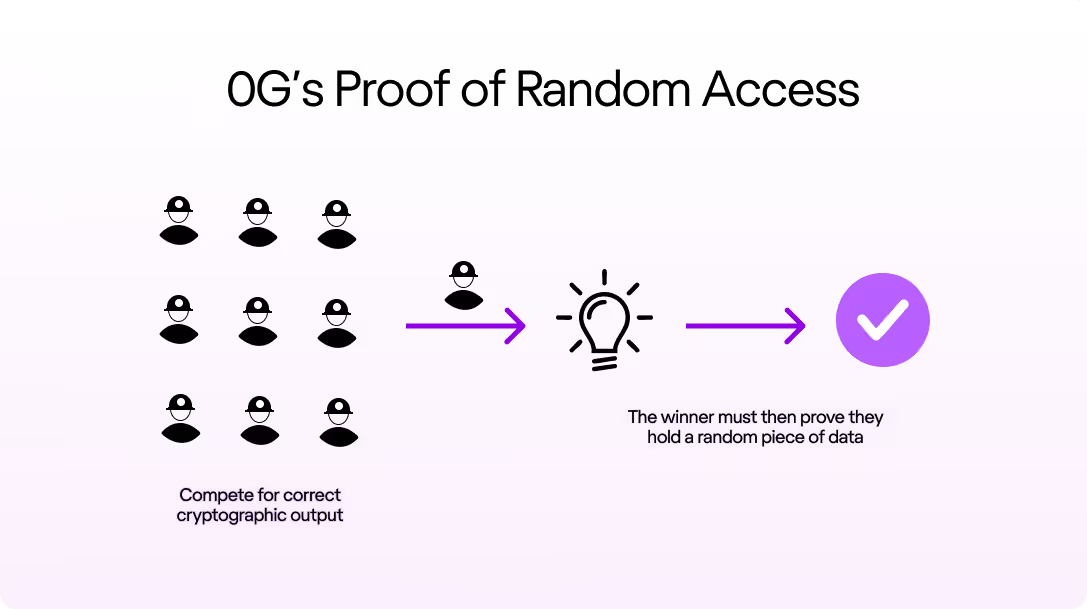
Build on 0G
Nowadays, storage is no longer just a backend service but a core pillar of intelligent infrastructure.
As onchain AI becomes more real, the need for fast, composable, and verifiable storage will only grow. 0G Storage is already powering next-generation apps across various use cases, and it’s ready for anyone to build upon.
Whether you're integrating AI agents, managing real-time data, or scaling a new kind of decentralized application, 0G Storage is the foundation you need. Get started with the full 0G Storage documentation and start building today.




